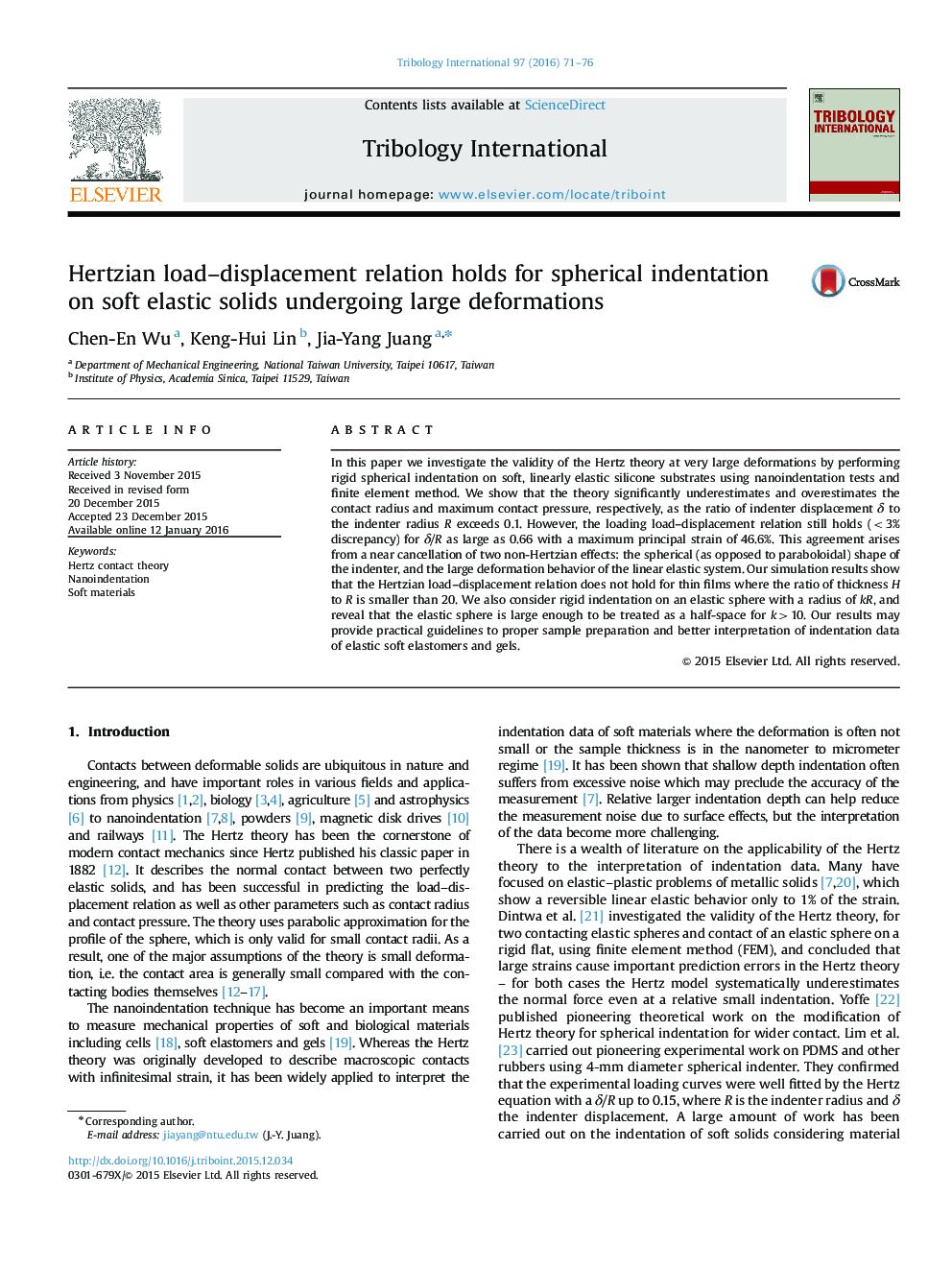| Article ID | Journal | Published Year | Pages | File Type |
|---|---|---|---|---|
| 614305 | Tribology International | 2016 | 6 Pages |
•The Hertzian load-displacement relation still holds (<3% discrepancy) for δ/R as large as 0.66 with a maximum principle strain of 46.6%.•The Hertz theory significantly underestimates and overestimates the contact radius and maximum contact pressure, respectively, as δ/R>0.1.•The Hertzian load-displacement relation does not hold for thin films where the ratio of thickness H to R is smaller than 20.•An elastic sphere with a radius of kR is large enough to be treated as a half-space for k>10.
In this paper we investigate the validity of the Hertz theory at very large deformations by performing rigid spherical indentation on soft, linearly elastic silicone substrates using nanoindentation tests and finite element method. We show that the theory significantly underestimates and overestimates the contact radius and maximum contact pressure, respectively, as the ratio of indenter displacement δ to the indenter radius R exceeds 0.1. However, the loading load–displacement relation still holds (<3% discrepancy) for δ/R as large as 0.66 with a maximum principal strain of 46.6%. This agreement arises from a near cancellation of two non-Hertzian effects: the spherical (as opposed to paraboloidal) shape of the indenter, and the large deformation behavior of the linear elastic system. Our simulation results show that the Hertzian load–displacement relation does not hold for thin films where the ratio of thickness H to R is smaller than 20. We also consider rigid indentation on an elastic sphere with a radius of kR, and reveal that the elastic sphere is large enough to be treated as a half-space for k>10. Our results may provide practical guidelines to proper sample preparation and better interpretation of indentation data of elastic soft elastomers and gels.
